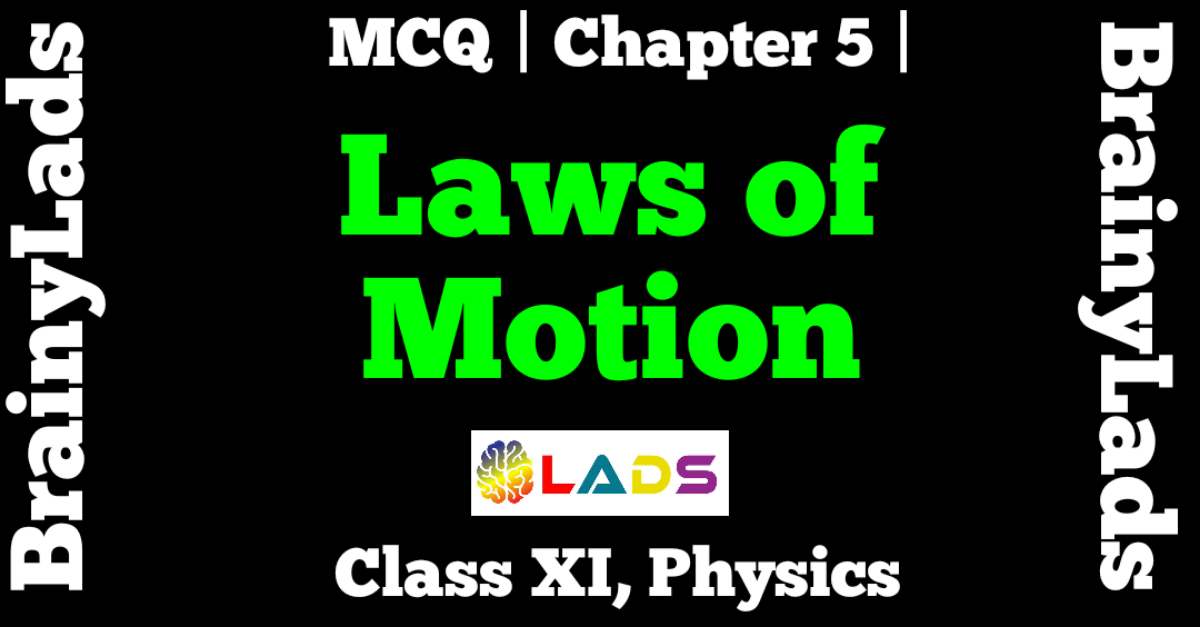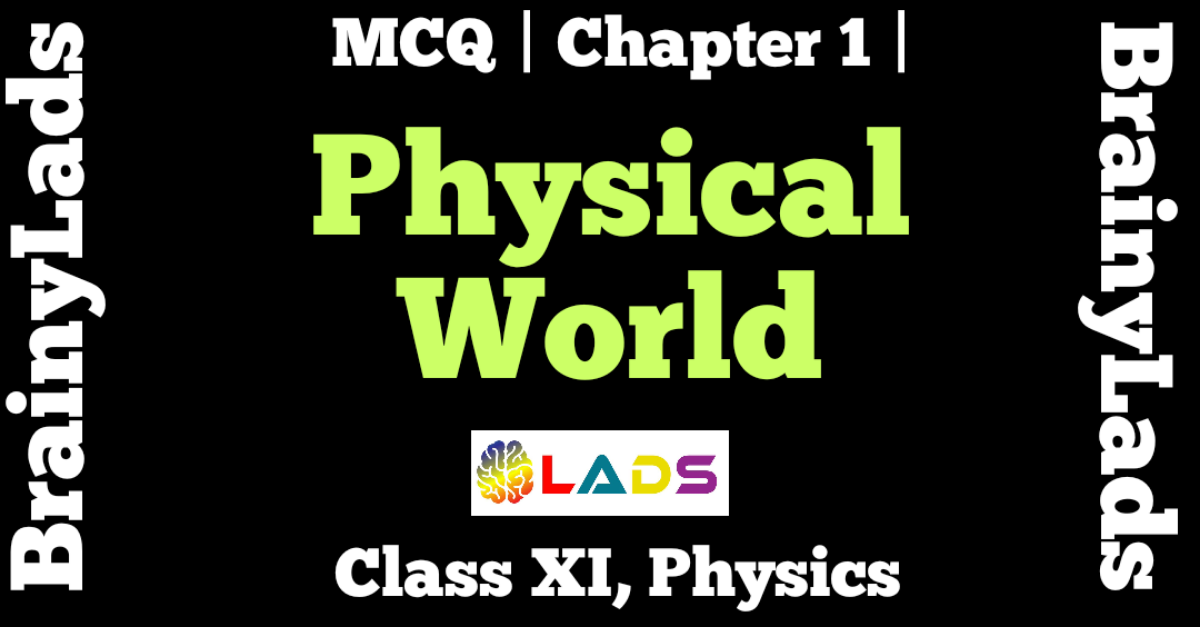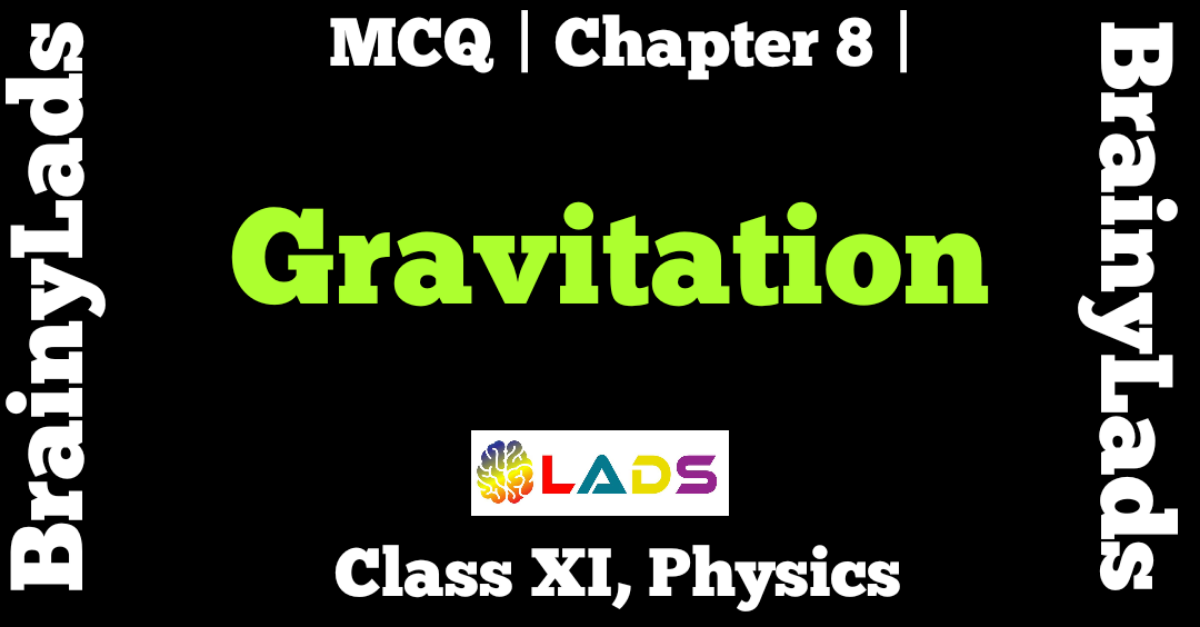MCQ of Work Energy and Power | Chapter 6 | Physics | Class 11 | CBSE |
MCQ of Work Energy and Power, Chapter 6, Class 11 Physics
Multiple Choice Questions of Work, Energy and Power, Chapter 6, Class 11 Physics
Question 1: The work energy theorem states that the change in
- Kinetic energy of a particle is equal to work done on it by the net force
- Kinetic energy of a particle is equal to the work done by one of the forces acting on it
- Potential energy of a particle is equal to the work done on it by the net force
- Potential energy of a particle is equal to the work done by one of the forces acting on it
Answer: A ( Kinetic energy of a particle is equal to work done on it by the net force)
Question 2: A body of mass 4 kg is moving with momentum 8 kg m s-1. If force of 0.2 Newton acts on it in the direction of motion of the body for 10 s. The increase in kinetic energy is
- 10 J
- 8.5 J
- 4.5 J
- 4 J
Answer: C (4.5 J)
Question 3: An object of mass m is released from rest from the top of a smooth inclined plane of height h. Its speed at the bottom of the plane is proportional to
- m0
- m
- m2
- m-1
Answer: A (m0)
Question 4: A weightlifter lifts a weight off the ground and holds it up
- Work is done in lifting as well as holding the weight
- No work is done in both lifting and holding the weight
- Work is done in lifting the weight but no work is required to done in holding it up
- No work is done in lifting the weight but work is required to be done in holding it up
Answer: C (Work is done in lifting the weight but no work is required to done in holding it up)
Question 5: A block of mass 2 kg initially at rest moves under the action of an applied horizontal force of 6 N on a rough horizontal surface. The coefficient of friction between block and surface is 0.1. The work done by the applied force in 10 s is
- 200 J
- -200 J
- 600 J
- -600 J
Answer: C (600 J)
Question 6: Which of the following statement is correct ?
- Kinetic energy may be zero, positive or negative
- Power ,energy and work are all scalars
- Potential energy may be zero, positive or negative
- Ballistic pendulum is a device for measuring the speed of bullets
Answer: A (Kinetic energy may be zero, positive or negative)
Question 7: If the force acting on a body is inversely proportional to its speed then its kinetic energy is
- Linearly related to time
- Inversely proportional to time
- Inversely proportional to the square of time
- A constant
Answer: A (Linearly related to time)
Question 8: A truck and a car moving with same kinetic energy are brought to rest by the application of breaks which provide equal retarding forces. Which of them will come to rest in a shorter time?
- The truck will come to rest in a shorter time
- The car will come to rest in a shorter time
- Both the car and the truck will travel the same distance before coming to rest
- Cannot be predicted since information is incomplete
Answer: C ( Both the car and the truck will travel the same distance before coming to rest )
Question 9: A bullet of mass m fired at 30° to the horizontal leaves the barrel of the gun with a velocity v. The bullet hits a soft target at a height h above the ground while it is moving downward and emerges out with half the kinetic energy it hand before hitting the target. Which of the following statements is correct in respect of bullet after it emerges out of the target?
- The velocity of the bullet remains the same
- The velocity of the bullet will be reduced to half of its initial value
- The velocity of the bullet will be more than half of its earlier velocity
- The bullet will continue to move along the same parabolic path
Answer: C (The velocity of the bullet will be more than half of its earlier velocity)
Question 10: For a moving particle of (mass m, velocity v ) having a moment p. Which one of the following correctly describes the kinetic energy of the particle?
- P2 / 2m
- P / 2m
- v2 / 2m
- v / 2m
Answer: A (P2 / 2m)
You may also read MCQ of Physical World, MCQ of Units and Measurements, MCQ of Motion in a Straight Line, MCQ of Motion in a Plane, MCQ of Laws of Motion, Energy and Power, MCQ of System of Particles and Rotational Motion, MCQ of Gravitation for better understanding of the chapters.
Question 11: The momentum of a body is increased by 25%, the kinetic energy will be increased by about
- 25 %
- 5 %
- 56 %
- 38 %
Answer: C (56 % )
Question 12: Two bodies A and B have masses 20 kg and 5 kg respectively. Each one is acted upon by a force of 4 kg wt. If the acquired the same kinetic energy in times tA and tB then the ratio tA / tB is
- 1 / 2
- 2
- 2 / 5
- 5 / 6
Answer: B (2)
Question 13: The potential energy of a system increases if work is done
- Upon the system by a non conservative force
- By the system against a conservative force
- By the system against a non conservative force
- Upon the system by a conservative force
Answer: B ( By the system against a conservative force )
Question 14: The negative of the work done by the conservative internal forces on a system equals to the change in
- Total energy
- Kinetic energy
- Potential energy
- None of these
Answer: C (Potential energy)
Question 15: Identify the false statement from the following.
- Work energy theorem is not independent of Newton’s second law
- Work energy theorem holds in all inertial frames
- Work done by friction over a closed path is zero
- Work done is a scalar quantity
Answer: C (Work done by friction over a closed path is zero)
Question 16: Which of the following statements is incorrect?
- No work is done if the displacement is perpendicular to the direction of the applied force
- If the angle between the force and displacement vectors is obtuse, then the work done is negative
- Frictional force is non conservative
- All the central forces are non conservative
Answer: D (All the central forces are non conservative)
Question 17: The potential energy of a spring when stretched through a distance x is 10 J. What is the amount of work done on the same string to stretch it through an additional distance x?
- 10 J
- 20 J
- 30 J
- 40 J
Answer: C (30 J)
Question 18: The bob of a pendulum is released from a body horizontal position. If the length of the pendulum is 2 m, what is the speed with which the bob arrives at the lower most point. Assume that 10% of its energy is dissipated against air resistance .
- 4 m s-1
- 6 m s-1
- 8 m s-1
- 10 m s-1
Answer: B (6 m s-1)
Question 19: When a long spring is stretched by 2 cm, its potential energy is V. If the spring is stretched by 10 cm the potential energy in it will be
- 10 V
- 25 V
- V / 5
- 5 V
Answer: B (25 V)
Question 20: A 1 kg block situated on a rough incline is connected to a spring of negligible mass having spring constant 100 N m-1. The block is released from rest with the spring in the unstretched position. The block moves 10 cm down the incline before coming to rest. The coefficient of friction between the block and the incline is
(Assume that the pulley is frictionless)
- 0.2
- 0.3
- 0.5
- 0.6
Answer: B (0.3)
Question 21: Which of the following statement is correct?
- Heat is absorbed in exothermic reaction
- Heat is released in endothermic reaction
- Energy released in burning 1 litre of gasoline is 300 MJ
- Chemical energy is associated with the forces that give rise to the stability of substances
Answer: D (Chemical energy is associated with the forces that give rise to the stability of substances)
Question 22: A bullet fired into a fixed target loses half of its velocity after penetrating 3 cm. How much further it will penetrate before coming to rest assuming that it faces constant resistance to motion?
- 1.0 cm
- 1.5 cm
- 2.0 cm
- 3.0 cm
Answer: A (1.0 cm)
Question 23: When two spheres of equal masses undergo glancing elastic collision with one of them at rest, then after collision
- They will move opposite to one another
- They will move in the same direction
- They will move together
- They will move at right angle to each other
Answer: D (They will move at right angle to each other)
Question 24: A ball falls under gravity from a height of 10 m with an initial downward velocity u. It collides with the ground and loses 50% of its energy in collision and then rises back to the same height. The initial velocity u is
- 7 m s-1
- 25 m s-1
- 14 m s-1
- 28 m s-1
Answer: C (14 m s-1)
Question 25: Consider the following statements A and B. Identify the correct choice in the given answers.
A. In one dimensional perfectly elastic collision between two moving bodies of equal masses, the bodies merely exchange their velocities after collisions.
B. If a lighter body at rest suffers perfectly elastic collision with a very heavy body moving with a certain velocity then after collision both travel with same velocity.
- A and B are correct
- Both A and B are wrong
- A is correct, B is wrong
- A is wrong, B is correct
Answer: C (A is correct, B is wrong)
Question 26: During inelastic collision between two bodies which of the following quantities always remain conserved?
- Total kinetic energy
- Total mechanical energy
- Total linear momentum
- Speed of each body
Answer: C ( Total linear momentum)
Question 27: An electron and a proton are moving under the influence of mutual forces. In calculating the change in the kinetic energy of the system during motion one ignores the magnetic force of one on another. This is because,
- The two magnetic forces are equal and opposite, so they produces no net effect
- The magnetic forces do not work on each particle
- The magnetic forces do equal and opposite (but non zero) work on each particle
- The magnetic forces are necessary negligible.
Answer: B (The magnetic forces do not work on each particle)
Question 28: A proton of mass m collides elastically with a particle of unknown mass at rest. After the collision the proton and the unknown particle are seen moving at an angle of 90° with respect to each other. The mass of unknown particle is
- m
- 2 m
- m / √3
- m / 2
Answer: A (m)
Question 29: A particle of mass ‘m’ moving with speed ‘2 v’ and collides with a mass ‘2 m’ moving with speed ‘v’ in the same direction. After collision the first mass is stopped completely while the second one splits into two particles each of mass ‘m’ which move at angle 45° with respect to the original direction. The speed of each of the moving particle will be
- √2 v
- v / 2√2
- 2√2 v
- v / √2
Answer: C (2√2 v)
Question 30: A bullet of mass 10 g moving horizontally with a velocity of 400 m s-1 strike a wooden block of mass 2 kg which is suspended by a light inextensible string of length 5 m. As a result the centre of gravity of the block is found to rise a vertical distance of 10 cm. The speed of the bullet after it emerges out horizontally from the block will be
- 100 m s-1
- 80 m s-1
- 120 m s-1
- 160 m s-1
Answer: C (120 m s-1)
Question 31: A proton is kept at rest. A positively charged particle is released from rest at a distance d in its field. Consider two experiments ; one in which the charged particle is a proton and in another a positron. In the same time t, the work done on the to moving charged particle is
- Same as the same force is involved in the two experiments
- Less for the case of a positron as the positron moves away more rapidly and the force on it weekends
- More for the case of a positron as the positron moves away a larger distance
- Same as the work done by charged particle on stationary proton
Answer: C (More for the case of a positron as the positron moves away a larger distance)
Question 32: A man squatting on the ground gets straight up and stands. The force of reaction of ground on the men during the process is
- Constant and equal to mg in magnitude
- Constant and greater than mg in magnitude
- Variable but always greater than mg
- At first greater than mg, and later becomes equal to mg
Answer: D (At first greater than mg, and later becomes equal to mg)
Question 33: Body A of mass 4 m moving with speed u collides with another body B of mass 2 m, at rest. The collision is head on and elastic in nature. After the collision the fraction of energy lost by the colliding body A is
- 5/9
- 1/9
- 8/9
- 4/9
Answer: C (8/9)
Do share the post if you liked it. For more updates, keep logging on BrainyLads



Great job!